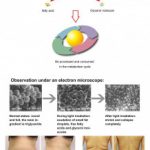Last Updated on 12 months by Francis
https://www.youtube.com/watch?v=S5zmQCrcS80
Near Infrared Light Therapy is a type of alternative medicine that uses light to treat various health conditions. This therapy has been gaining popularity in recent years, but some people are still skeptical about its safety. Therefore, in this article, we will explore whether Near Infrared Light Therapy is safe or not.
Contents
The Science Behind Infrared Light Therapy
Infrared light therapy is a non-invasive treatment that uses specific wavelengths of light to penetrate deep into the body’s tissues, promoting healing and reducing pain. Near-infrared light therapy is a specific type of infrared light therapy that uses wavelengths between 700 and 1100 nanometers. These wavelengths can penetrate the skin and reach deeper layers of tissue, including muscle and bone.
Research has shown that near-infrared light therapy can stimulate the production of ATP, which is the body’s primary source of energy. This increase in ATP production can lead to improved cellular function, tissue repair, and reduced inflammation. Near-infrared light therapy has also been shown to improve blood flow, which can help deliver nutrients and oxygen to the affected area.
The Safety of Near-Infrared Light Therapy
One of the biggest concerns when it comes to any type of therapy is safety. However, near-infrared light therapy is generally considered safe when used properly. The wavelengths used in near-infrared light therapy are within a safe range and are not known to cause harm to the body.
In fact, near-infrared light therapy has been used for decades in a variety of medical settings, including wound healing, pain relief, and even cancer treatment. It is also commonly used in cosmetic treatments, such as reducing the appearance of fine lines and wrinkles.
Potential Side Effects of Near-Infrared Light Therapy
While near-infrared light therapy is generally considered safe, there are some potential side effects to be aware of. These side effects are typically mild and short-lived, and may include:
- Redness or irritation of the skin
- Headaches or dizziness
- Nausea or vomiting
It’s important to note that these side effects are rare and typically only occur when the therapy is used improperly or for an extended period of time.
Key takeaway: Near-infrared light therapy is a safe and effective non-invasive treatment that uses specific wavelengths of light to penetrate deep into the body’s tissues, stimulate ATP production, improve cellular function, tissue repair, and reduce inflammation. While generally considered safe, precautions should be taken to ensure its proper use and to minimize potential side effects. Near-infrared light therapy can be used to treat a range of conditions and can be administered through various methods. Consultation with a healthcare professional is recommended before use.







